MAKING A RABBITSTICK
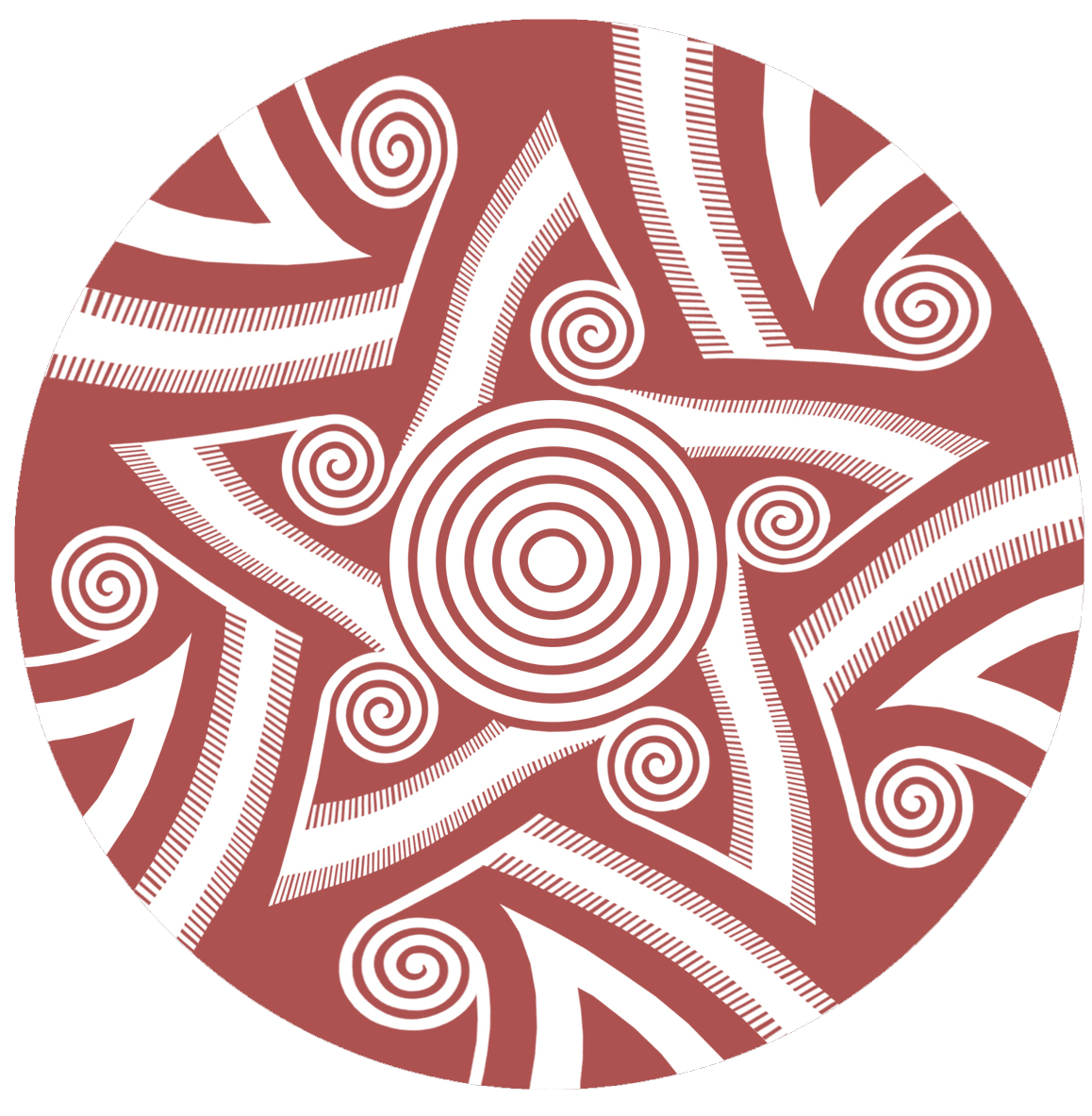
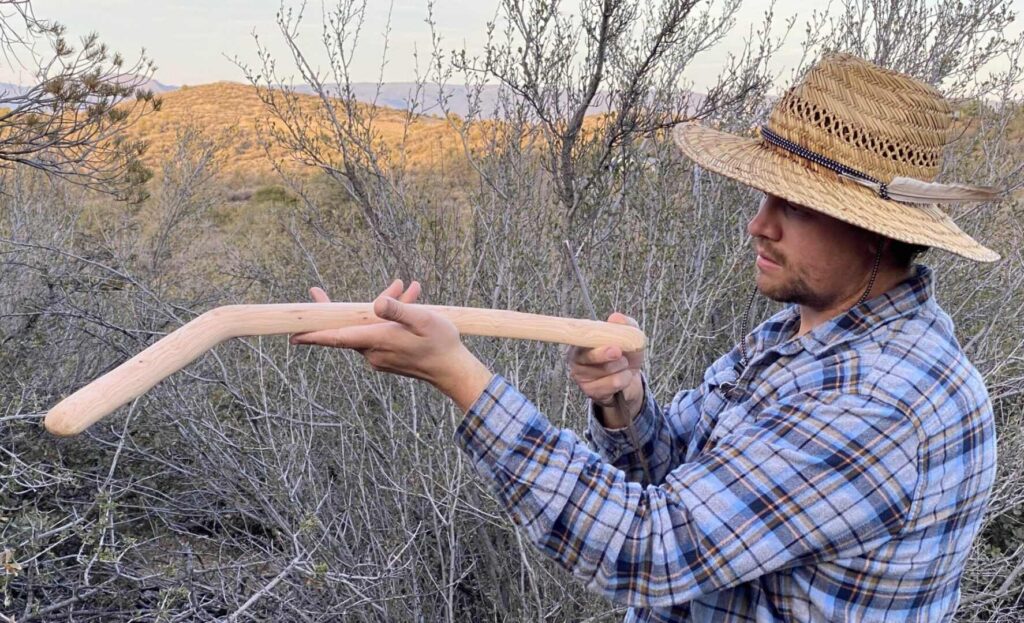
It was thirteen years ago to this date where I was amazed by a simple and effective piece of throwing technology that would reshape the way I viewed traditional hunting methods. I remember the great Paul Campbell was at the Malki Museum in Banning, California demonstrating the complex nature of what we call the rabbit stick. Some of Paul’s rabbit sticks were short and narrow, where as others were long and quite bulky. As Paul took his demonstration into an open field where tall wild grasses dominated the landscape, I knew I was in for an excellent demonstration. In one hand Paul carried two rabbit sticks and in his throwing hand he rested another rabbit stick on his shoulder. Suddenly he took a step forward and threw the stick side armed with mild force. As the stick flew through the air like an airplane propeller my interest in this technology grew even stronger. As I fast forward, I think about how many people Paul influenced in a positive way over the years. This article and section is dedicated to one of the greatest modern primitive technologists of my lifetime, Paul Douglas Campbell.
The rabbit sick has an incredibly deep rooted history throughout the world. Some of the more common regions we see rabbit sticks appear in the archaeological record are located in Australia, Egypt, Africa, India, and the Americas. Although very few prehistoric rabbit sticks in Arizona survive, we do have a few rare examples dating back to the archaic period. Once agriculture became large scale, prehistoric southwestern people relied heavily on maize, beans, squash, and peppers. We can also argue the demand for meat was equally as important. In fact in Phoenix where the prehistoric Hohokam resided, we find an extremely high frequency of rabbit remains. These remains suggest that rabbits were a valuable component of the Hohokam diet and technologies such as the rabbit stick carried over from late Archaic Period into the agriculturalist’s life way.
By far the most powerful, lethal, and oldest rabbit sticks or throwing sticks come from traditional Australia. Although the Australian Aborigine people never developed the bow and arrow, they absolutely perfected traditional throwing technologies including the atlatl and dart system and the throwing stick. Aborigine throwing sticks were not merely used in small game hunting, rather they were used for large game as well. Often throwing sticks were designed to mimic the animal and by throwing the stick at an animal’s legs it would cripple the target and prevent it from traveling further. While this might sound vicious, one must understand the basic and common necessity of a support system that was relied upon in traditional times. The question now becomes, What made an Aborigine throwing stick so effective? Aborigine throwing sticks are made of extremely dense mulga wood and were tuned to perfection. This combination made for the ideal weapon that offered great consistency during its flight and reached distances of over 100 yards.
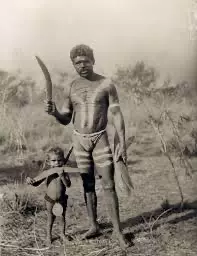
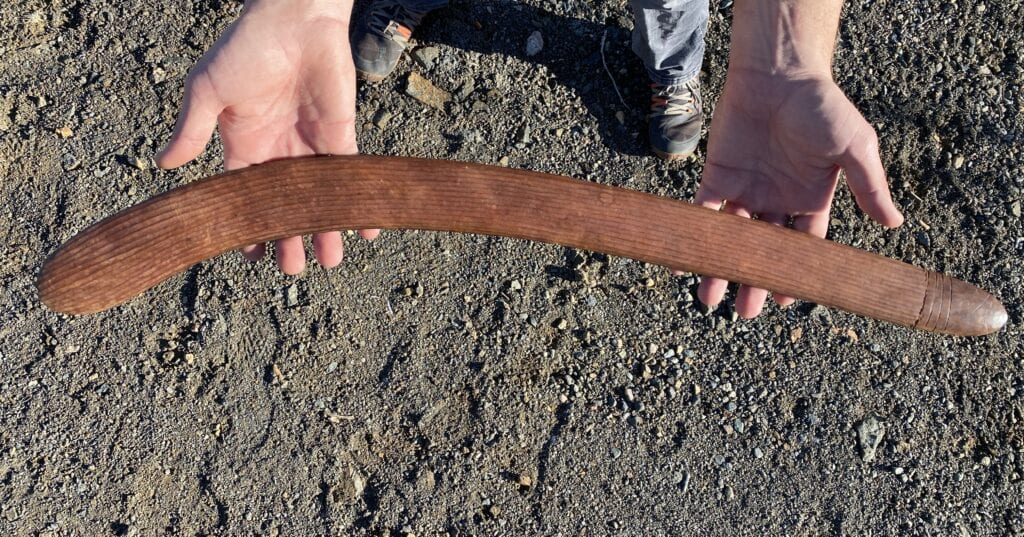
Like most primitive technologies, the rabbit stick should be carefully and slowly crafted. With any rabbit stick hard woods such as oak, mulga, manzanita, mountain mahogany, hickory, and hackberry should be selected. Although softer woods are much easier to work, they tend to break and damage very easily. When searching for a hard wood rabbit stick stave, look for a natural bend in a tree limb that has minimal to no knots. Although this might sound like an easy task, it is rather tricky—the perfect stave is few and far in-between. An alternative is to chose a straight stave that is free of large knots and resort to using heat to bend the stick into shape. If indeed this is what you decide to do, simply heat the freshly cut stave in a hot bed of coals and bend it in between a natural fork in a tree about a quarter to half way down from the top of your freshly cut stave. Once the rabbit stick is selected you must allow it to completely dry before removing wood. If you decide to bend the stick into shape, rehydrate the wood in a slow moving stream or pool of water for a few hours.
When the rabbit stick stave is dry it’s time to begin crafting your hunting tool. First begin by removing the outer bark with a sharp knife. Once the bark is removed simply chop away wood on the top and bottom of the stave with an axe or large blade. As you chip away material make sure you go slow and do not gouge too deep into wood. When you are left with a flat board about 3 inches thick stop using your axe and begin to rasp all of the gouge marks away from all sides of the board. After all gouge marks are removed, it is time to make a decision on what kind of rabbit stick you want to make. Although there are many different styles and cross sections, it really comes down to what size game you intend to hunt and how far you want the stick to fly when thrown. Just keep in mind, long distance rabbit sticks require more tuning and are far more complex. Here I will take you through the steps of making a medium ranged rabbit stick that can reach distances up to 65 yards.
You now have the stick flattened on both sides and roughly shaped out—at this point tedious and time consuming work begins. A good medium ranged stick will measure about 2 to 3.5 inches wide and gradually tapers towards the handle. In addition, the curve should run about a quarter to half way down from the tip ( this will be the area that is not held ) of the stick. Now begin to remove wood from the top edges of the stick until you have a continuous globe shaped top and flat bottom. As you rasp or carve away the wood, constantly check the top to make sure the center of the globe runs continuous to the center of the stick. If the globe does not run continuous with the center of the stick, you must correct this as the stick will not fly appropriately upon completion.


Assuming a hardwood stick was selected, as it sits right now the stick is far too thick and the continuation of wood removal from the top is necessary. As you remove material you will notice the globe shape top is becoming increasingly shallow—this is ok! In fact with the exception of soft wood rabbit sticks, a radical globe shape top will inhibit the stick from flying properly when thrown. Thus, a smooth and well shaped low globe shape top is important to the performance of your sick. Essentially the stick cuts through the atmosphere at a rapid pace as air flows over the top of the globe shape while the bottom and nose of the stick creates lift but prevents the stick from rising too much. As the stick begins to lighten up start throwing it with heavy force—If it flips around in the air, more wood needs to be removed from the top until it flies similar to an airplane propeller. At the same time if the stick fails to reach long distances and pulls to the left or right, it needs to be tuned. As I mentioned earlier tuning for long distances becomes complex. However, for distances up to 65 yards, tuning is quite easy and requires little manipulation.
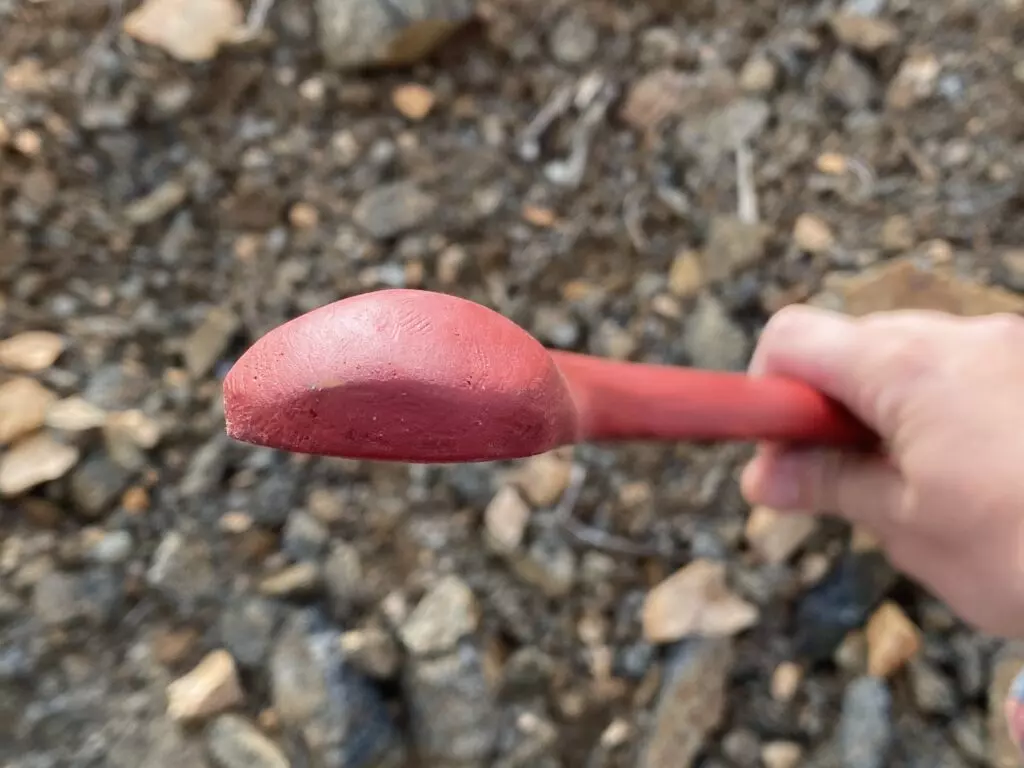
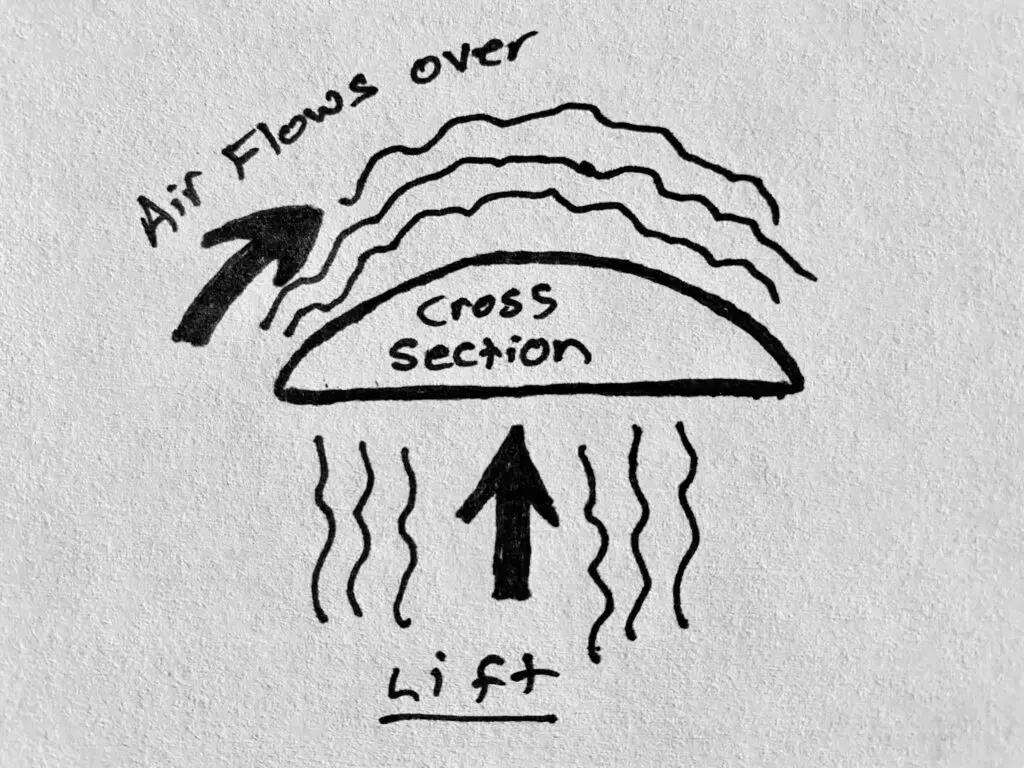
The final stages of producing a medium range rabbit stick includes tuning and painting the stick. In my experience every single rabbit stick I have produced needed to be tuned in order for them to reach longer distances. Moreover, most of the sticks will fly well for about 40 yards before it falls to the right or left. In order to correct this issue you want to rasp or carve a positive skew on both tips. In other words at the very end of each tip rasp the edge slightly lower as you create a more drastic and sudden globe shaped top. Keep throwing the stick and adjusting the skew on each tip until it reaches a steady distance of at least 60 yards. Once complete, sand the stick and paint it with a red hematite or ochre. Although painting a rabbit stick adds natural beauty to a boring piece of wood, the main reason we paint them is due to how well they blend into the environment. Indeed, finding a red painted stick is much easier than finding a stick that looks identical to the local vegetation around you.
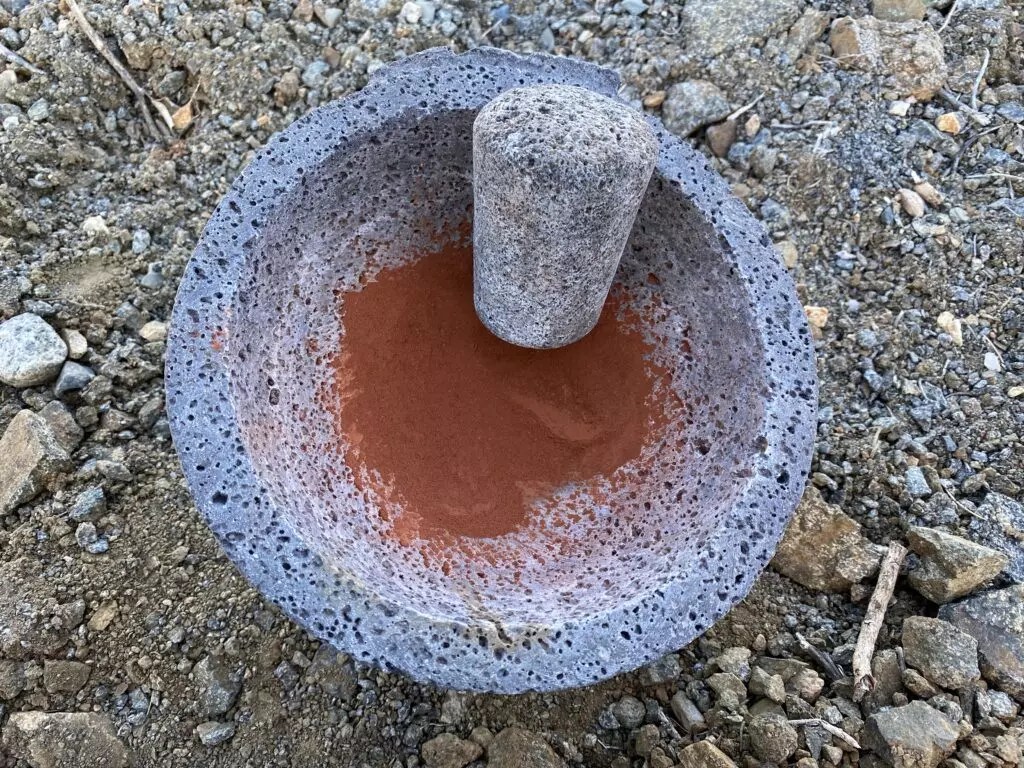
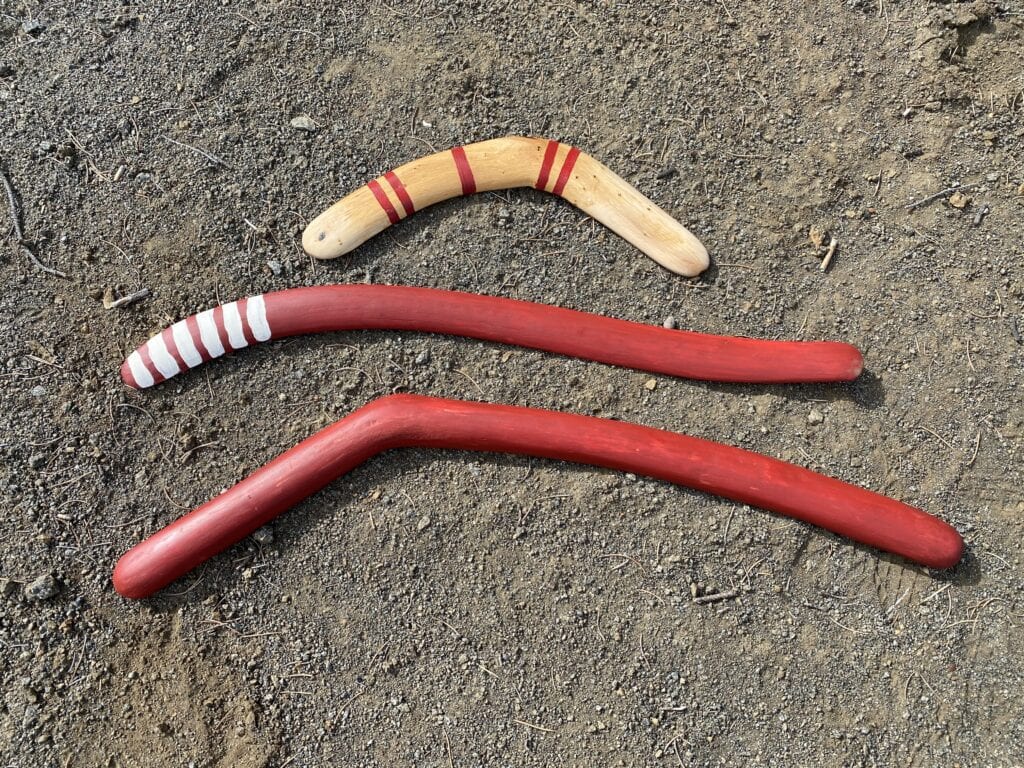
In concluding this short article we can make the statement that the rabbit stick is an incredible piece of ancient technology that helped improve the lives of past people well over 1,000 years ago. The rabbit stick I instructed on how to make is considered medium range and requires a moderate amount of tuning. However, long ranged Australian Aborigine style sticks are extremely advanced and require much more careful tuning. My recommendation is to start off small by making a stick that reaches distances out to 30 yards. Learn about what woods will work best in your area and always keep an open mind set. As you continue to make them, utilize this article to your advantage and start tuning your throwing sticks. It is true that some might read this article and conclude that making a rabbit stick is easy. This is not the case. It is critical to understand this technology is advanced and requires a precise comprehension of both physics and engineering. In fact there are only a few people I know who have truly mastered the art of making long ranged Aborigine style sticks. One person that comes to mind is Benjamin Scott. Ben’s throwing sticks are absolute incredible works of art that will be sure to impress anyone who experiments with his products.
This article is dedicated to my friends Paul Campbell and Justin Williams. Justin’s passion in primitive technologies showed through his hard work and labor. During Paul’s life, he dedicated himself to understanding how local Native peoples continue use traditional technologies as a life way. Unfortunately, life is never guaranteed and is often cut short. In Paul and Justin’s memory please consider donating to help find a cure to cancer
https://www.cancer.org/involved/donate.html
Author,
Jeff Martin
Watch a long range rabbit stick fly
